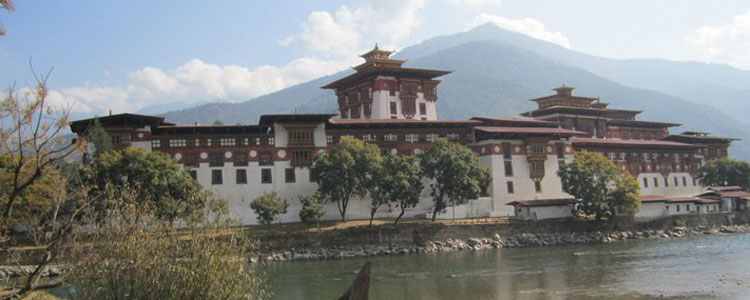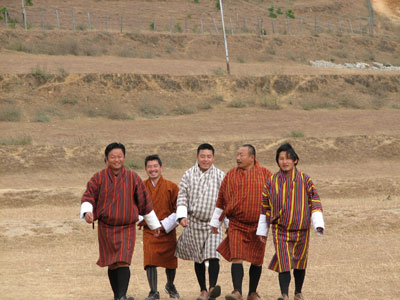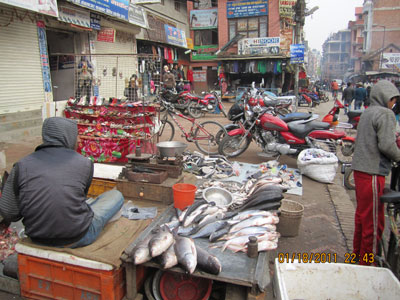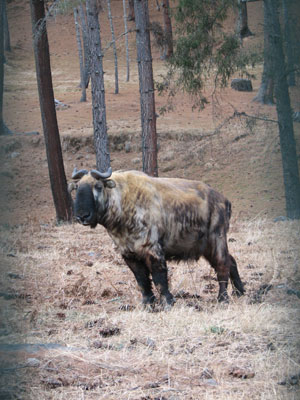Bhutan, Nepal & the mystical Himalayas
by Mary Hollis; Moline, IL
My husband, Mike, and I will forever treasure the memories of our Jan. 10-Feb. 2, 2011, travels to Bhutan and Nepal, our most challenging trip to date.
Just getting to the Kingdom of Bhutan took three days and five flights. After such an ordeal, you can only imagine how I felt when I learned my luggage was lost, and, as if that weren’t bad enough, it was eight days before I saw it again. (It was the first time in my life that I have hugged a suitcase!) Thank goodness we had done some cross-packing, so I had some things in Mike’s luggage and he had some in mine. That saved the day.
Beginning in Bhutan
Our trip was planned with Overseas Adventure Travel (Cambridge, MA; 800/493-6824). Their promise is adventure, value and discovery on the road less traveled. True to their word, OAT provided us with a travel experience not to be forgotten.
However, in retrospect, I’m not sure they arranged the most advantageous air routing; five flights plus an overnight stay in India were necessary both getting there and coming home.
In addition to needing visas for Bhutan and Nepal, we also were required to have visas for India. (I would quote prices but advise checking current rates online.)
We love the convenience of having a reputable travel company do the routing for us, but for those who don’t mind jumping through hoops, it might be more advantageous to book your own flights (keeping in mind that doing so comes with its own set of risks).
The small country of Bhutan is located at the eastern end of the Himalayas and bordered by India and China.
During our trip, we did a lot of hiking. One of our more strenuous treks took us to the Tiger’s Nest Monastery viewpoint.
The monastery is perched precariously on a cliff 3,000 feet above the valley floor. Our hike took us to a location opposite the monastery where we could enjoy the mystical view and take plenty of pictures.
According to legend, Guru Rinpoche flew to the site of the monastery on the back of a tigress from Tibet and meditated there for three months, marking the arrival of Buddhism to Bhutan.
Our week in Bhutan took us to the cities of Paro, Punakha and the capital city of Thimphu. We visited several dzongs, or massive fortresses each consisting of towering exterior walls surrounding a complex of courtyards, temples and other buildings. Also enjoyable was a visit to a takin reserve, where we saw barking deer and the national animal of Bhutan, the takin. This hoofed animal resembles a cross between a goat and an antelope.
Travel warning — we did not realize that buildings in Bhutan have no central heat. Our hotels did provide small space heaters, but that’s not quite like central heating. The museums, shops, restaurants and other public buildings we visited were often chilly. We saw employees wearing coats and huddling around space heaters and were told such heaters have been used there for only the past 10 to 15 years. Bhutan is a beautiful country yet still developing.
On to Nepal
Our two weeks in Nepal began with a flight to Kathmandu, the country’s capital. What a colorful hub of activity! We enjoyed the the markets and shrines and the hustle and bustle of the city, took a rickshaw ride and visited the famous Swayambhunath, or Monkey Temple.
We also were happy to relax amid the splendor of the Himalayas aboard Yeti Airlines’ Everest Express flight, passing near these amazing mountains, including Mount Everest, the tallest peak on Earth.
The hotel we enjoyed most was the Gokarna Forest Resort in Kathmandu, which featured spectacular views of the Kathmandu Valley as well as an on-site spa and golf course. An added feature, which we found amusing, was the fact that monkeys could be seen on the grounds, rooftops and, at times, even inside the hotel buildings. We were warned to keep our windows closed!
We took an optional afternoon trip to Bhaktapur, one of several UNESCO World Heritage Sites we visited. Once on the trade route to Tibet, Bhaktapur seemed, to me, to be an untouched ancient city — a treat for any visitor! Within this City of Devotees, we saw its historic Durbar Square, ancient courtyards and holy temples.
The tour price ($50 per person) included an ample meal complete with water buffalo. The meat was a bit tough, but we were glad for the opportunity to try it.
Outdoor adventure
Next we flew to Pokhara for more serious trekking along the foothills of the Annapurna mountains. We hiked through small villages and visited and interacted with children at a local school. Lunch with a Gorkha family gave us insights into the traditions and daily life in Nepal.
We spent two nights camping at Seti River Camp, along the Seti River. Because the campsite is unreachable by road, it was necessary for us to raft both in and out of the area. Our Gore-tex® clothing was helpful, but still our feet got wet and cold as we manned our oars and navigated the rapids.
The campsite was secluded, of course, and deliciously relaxing. However, I would warn that being there in January is for the truly hearty traveler.
The excellent staff placed hot-water bottles in our beds every night, and each tent did have the luxury of a private bath/shower just two steps out the back tent flap. However, hot water was limited to what could be provided by solar power, and nighttime temperatures were chilly.
I soon learned that each morning it was better to use the tepid water from the hot-water bottles to wash my hair than use the cold tap water! The trade-off was that we stayed there at a time of year when we weren’t bothered by insects.
One of the most exciting parts of our adventure was the time we spent at Chitwan National Park. There, where the Chitwan jungle meets the beautiful Rapti River valley, we explored the area from the back of an elephant. It was thrilling to spot birds, butterflies and deer and to cross paths with a mother rhinoceros and her baby. We saw holes dug by sloth bears in search of insects but weren’t fortunate enough to actually see one of the bears.
The park naturalist spoke excellent English and provided us with an array of information about the area’s flora and fauna.
As Overseas Adventure Travel cautions, to enjoy this trip one needs an open curiosity, an adventurous spirit, a willingness to adapt and make the best of every situation and a healthy sense of humor about the unpredictable nature of travel.
We experienced dusty, bumpy roads; streets teeming with vendors; unfamiliar foods, and chilly weather. However, we were surprised that, for the most part, we were able to enjoy Western-style toilets rather than what we call “squatty potties.”
Land-only prices for OAT’s 2011 15-day trip to Nepal range from $3,895 to $4,495 per person, double occupancy, depending on the time of year. There are no tours during the monsoon months of June, July and August. Our travel to Bhutan was considered a pre-trip extension. OAT’s 2011 cost for six nights to Bhutan is $2,395 per person. The above prices include all airfare within Asia.
If you are looking for a different kind of travel experience and out-of-the-way places, Mike and I highly recommend OAT’s “Nepal and the Mystical Himalayas” tour.




